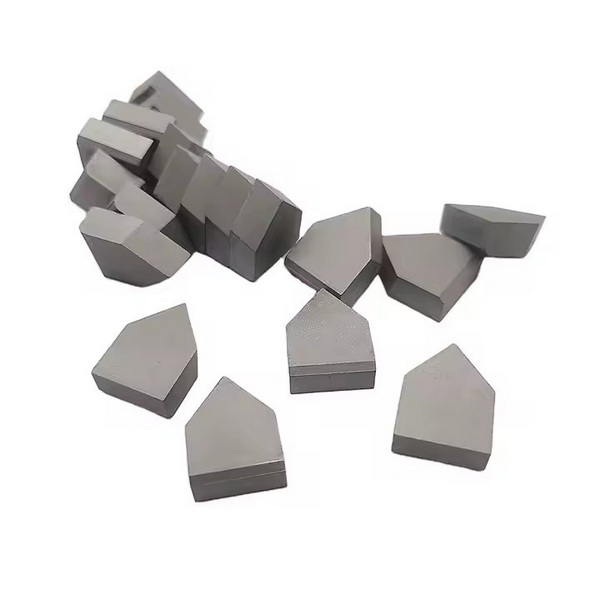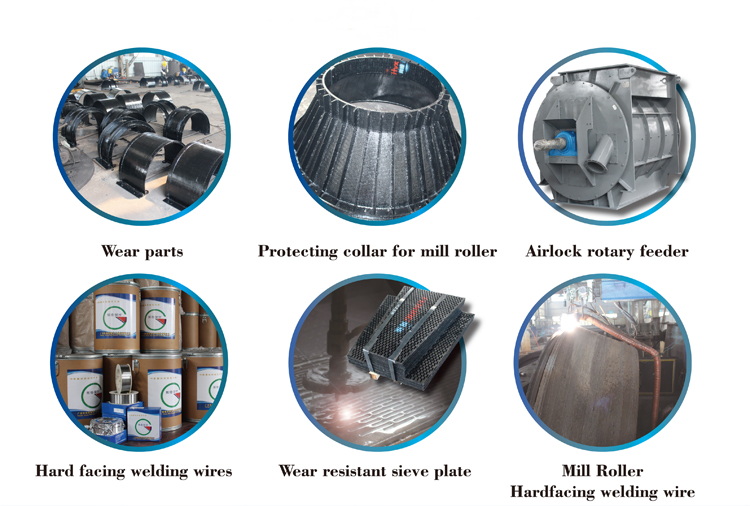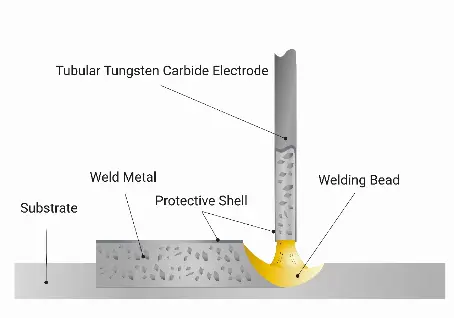Content Menu
● Enhanced Weld Quality and Structural Integrity
● Unmatched Deposition Rates and Productivity
● Superior Material Versatility
● Automation and Precision
● Corrosion and Wear Resistance
● Case Study: Nuclear Shielding Fabrication
● Environmental and Safety Benefits
● Integration with Emerging Technologies
● Conclusion
● FAQs
>> 1. How do Union Carbide alloys improve nuclear shielding efficiency?
>> 2. Can SAW systems weld aluminum effectively?
>> 3. What distinguishes HARDSPRAY NI WC-TS from competitors?
>> 4. How does tandem-twin SAW boost productivity?
>> 5. Are Union Carbide fluxes suitable for stainless steel?
● Citations:
Union Carbide welding alloys have revolutionized industrial manufacturing since their introduction in 1936, offering unmatched performance in high-stress applications ranging from nuclear shielding to heavy structural fabrication. These alloys combine advanced metallurgical engineering with innovative welding processes to deliver superior weld quality, operational efficiency, and long-term durability. Below, we explore their key advantages and applications.

Enhanced Weld Quality and Structural Integrity
Union Carbide's tungsten-nickel-iron alloys (e.g., 95% W-3.5% Ni-1.5% Fe) exemplify precision engineering. These alloys are produced via liquid-phase sintering, where blended metal powders are densified under controlled temperatures, achieving:
- Density of 18.27 g/cm³ for superior radiation shielding
- Two-phase microstructure (98–99% tungsten matrix with a nickel-iron secondary phase) for crack resistance
- Melting points above 1,465°C, ideal for high-temperature nuclear and aerospace applications.
In submerged arc welding (SAW), Union Carbide's proprietary fluxes and wire systems ensure defect-free welds by:
- Creating inert gas shields to prevent atmospheric contamination
- Optimizing arc stability through DC/AC power configurations
- Delivering consistent penetration profiles even on thin steel sheets.
Unmatched Deposition Rates and Productivity
Union Carbide's multi-wire SAW systems boost output by up to 40% compared to conventional methods:
| Process | Deposition Rate | Penetration |
| Single-wire DC | Baseline | Deep |
| Twin-wire DC | +20% | Moderate |
| Tandem-twin AC/DC | +40% | Shallow to moderate |
For structural steel fabrication, automated beam welding machines eliminate gaps between flanges and webs, enabling full-penetration welds at 47 inches per minute with zero post-weld adjustments. This efficiency is particularly beneficial in large-scale construction projects, where time and material savings directly impact profitability. Additionally, the reduced need for manual intervention minimizes the risk of human error, ensuring consistent quality across all welds.
Superior Material Versatility
Union Carbide alloys address diverse industrial needs:
- HARDSPRAY NI WC-TS: A metal-cored wire for thermal spraying, combining tungsten carbides (2,200–2,800 HV) in a nickel-boron-silicon matrix for extreme abrasion resistance in corrosive environments.
- L-TEC 800 Series: Mobile SAW systems with integrated flux dispensers, capable of welding 4x faster than manual methods while maintaining ≤0.12% porosity.
- Radiation-resistant tungsten alloys: Used in reactor shielding due to minimal thermal expansion (5.23×10⁻⁶ in/in/°C at 500°C) and neutron absorption.
These alloys are also used in the manufacture of cutting tools, where their hardness and wear resistance extend tool life and improve machining efficiency. For instance, in the production of drill bits and saw blades, Union Carbide's tungsten carbide-based materials ensure consistent performance under high stress and temperature conditions. This versatility extends to the aerospace sector, where lightweight yet strong components are crucial for reducing fuel consumption and enhancing aircraft performance.
Automation and Precision
Union Carbide's welding systems minimize human error through:
- Adaptive voltage control: Compensates for joint misalignment in real time.
- Preprogrammed heat inputs: Avoid HAZ degradation in critical alloys like Inconel.
- Simultaneous dual-side welding: Reduces warping in I-beam fabrication.
Automation also enhances safety by reducing exposure to hazardous environments and ensuring consistent weld quality across large production runs. This is particularly important in military and aerospace applications, where reliability and precision are paramount. Furthermore, automated systems can be integrated with quality control software to monitor weld parameters in real-time, providing immediate feedback for process optimization.
Corrosion and Wear Resistance
Proprietary fluxes (e.g., COMWELD CrMo1) enhance weld longevity in harsh environments:
- Stainless steel overlays: Achieve 45–55 HRC hardness with zero cracks.
- Aluminum-magnesium alloys: Maintain 5356-grade ductility even after 1,000 thermal cycles.
In offshore oil platforms, Union Carbide's corrosion-resistant coatings protect against seawater and salt spray, extending the lifespan of critical infrastructure components. This not only reduces maintenance costs but also ensures operational reliability in challenging marine environments. Additionally, these coatings can be applied to existing structures, offering a cost-effective solution for extending asset life without requiring replacement.

Case Study: Nuclear Shielding Fabrication
A Union Carbide 95W-3.5Ni-1.5Fe alloy shield:
- Blocked 98% of gamma radiation in reactor tests
- Sustained 10,000+ hours at 1,200°C without phase degradation
- Reduced machining costs by 30% via near-net-shape sintering.
This case highlights the versatility and performance of Union Carbide alloys in extreme conditions, demonstrating their potential for reducing operational risks and enhancing safety in critical applications. The ability to maintain structural integrity under high temperatures also makes these alloys suitable for advanced rocket nozzles and heat shields, where thermal stability is crucial.
Environmental and Safety Benefits
Beyond their technical advantages, Union Carbide welding alloys contribute to environmental sustainability and workplace safety:
- Reduced waste: Automated processes minimize material waste and excess heat input, lowering energy consumption.
- Improved air quality: Enclosed welding systems reduce particulate emissions, enhancing air quality in manufacturing environments.
- Enhanced worker safety: Automated systems reduce exposure to hazardous conditions, protecting workers from heat stress and toxic fumes.
These benefits align with global initiatives to reduce industrial carbon footprints and promote safer working conditions, making Union Carbide alloys a preferred choice for environmentally conscious manufacturers. Moreover, the reduced energy consumption and waste generation contribute to a more sustainable manufacturing process, aligning with corporate social responsibility goals.
Integration with Emerging Technologies
Union Carbide's welding alloys are also being integrated with emerging technologies like robotics and artificial intelligence (AI) to further enhance manufacturing efficiency:
- Robot-assisted welding: Improves precision and speed by automating complex weld paths.
- AI-driven quality control: Analyzes weld data in real-time to predict and prevent defects.
This integration not only boosts productivity but also enables real-time monitoring and optimization of welding processes, ensuring that products meet the highest quality standards while minimizing production downtime. Additionally, AI can help predict maintenance needs, reducing unplanned shutdowns and extending equipment lifespan.
Conclusion
Union Carbide welding alloys redefine industrial standards by merging high-performance materials with automated processes. From SAW-driven structural fabrication to tungsten-carbide coatings, these solutions ensure productivity, durability, and precision across sectors like energy, defense, and heavy machinery. Their versatility, combined with environmental and safety benefits, positions them as a cornerstone of modern manufacturing. As industries continue to evolve, the integration of Union Carbide alloys with emerging technologies will play a crucial role in shaping the future of manufacturing.

FAQs
1. How do Union Carbide alloys improve nuclear shielding efficiency?
Their tungsten-nickel-iron matrix achieves 18.27 g/cm³ density and stable thermal expansion, blocking 98% of gamma rays.
2. Can SAW systems weld aluminum effectively?
Yes, using AC power and 4043/5356 filler wires, Union Carbide's SAW achieves full-penetration welds on 6xx1-series aluminum.
3. What distinguishes HARDSPRAY NI WC-TS from competitors?
Its nickel-boron-silicon matrix binds tungsten carbides (2,800 HV) without delamination, even under acidic conditions.
4. How does tandem-twin SAW boost productivity?
By combining two twin-wire sets with AC/DC arcs, deposition rates increase by 40% versus single-wire setups.
5. Are Union Carbide fluxes suitable for stainless steel?
Yes, ProFill 316L fluxes prevent carbide precipitation in 18/8 stainless steel, ensuring corrosion resistance.
Citations:
[1] https://www.osti.gov/servlets/purl/4784643
[2] https://www.thefabricator.com/thewelder/article/arcwelding/subarc-for-structurals
[3] https://www.welding-alloys.com/product/hardspray-ni-wc-ts/
[4] https://www.westermans.com/bode-pcb.aspx
[5] https://www.boc.com.au/wcsstore/AU_BOC_Industrial_Store/pdf/product/en_AU/Guidelines-for%20Gas-Welding-and-Cutting.pdf
[6] https://ntrs.nasa.gov/api/citations/19720022816/downloads/19720022816.pdf
[7] https://www.unioncarbide.com/products.html
[8] https://www.accessengineeringlibrary.com/binary/mheaeworks/7ea71f88e35e68cc/2ea91a3b12e77c17b7ec077f16d69c2fd1a90c879d67083bdf2107de56cd0568/book-summary.pdf
[9] https://www.welding-alloys.com/product/wa-hardface-cn-te/
[10] https://www.lib.uchicago.edu/ead/pdf/century0622.pdf
[11] https://www.freepatentsonline.com/3663313.html
[12] https://digital.library.unt.edu/ark:/67531/metadc1035208/m2/1/high_res_d/4537094.pdf
[13] https://en.wikipedia.org/wiki/Union_Carbide_India_Limited
[14] https://www.alamy.com/stock-photo/union-carbide-company.html
[15] https://mbo.adventistas.org/befb_tag/union-carbide-welding
[16] https://www.alamy.com/stock-photo/union-carbide.html?page=4
[17] https://www.studyadda.com/sample-papers/ssc-chsl-102-sample-test-paper-5_q171/111/251506
[18] https://www.vedantu.com/question-answer/union-carbide-india-limited-ucil-is-a-company-class-10-social-science-cbse-6005102be7ed25330db666e6
[19] http://213.178.230.35/ndt/pdf/library/books/en/books16.pdf?%EF%BF%BD%EF%BF%BDxb+%26%2363728%3B%EF%BF%BDy%7B%EF%BF%BDw
[20] https://weldtalk.hobartwelders.com/forum/weld-talk-topic-archive/welding-projects/7871-help-with-my-union-carbide-welder
[21] https://intellegens.com/wp-content/uploads/2021/07/Welding-alloys-group-case-study.pdf?pi_content=09490ba4d37ead3a86b33c37e60bf0048e516f9f5212c59a82b45fdd8db4bb75
[22] https://cronaser.com/en/alloys-weld-copper-brass-bronze/
[23] https://www.osti.gov/servlets/purl/4226832
[24] https://www.ftc.gov/sites/default/files/documents/commission_decision_volumes/volume-90/ftc_volume_decision_90_july_-_december_1977pages_257-349.pdf
[25] https://apps.dtic.mil/sti/tr/pdf/AD0633247.pdf
[26] https://www.sanfoundry.com/welding-questions-answers-gas-welding/
















